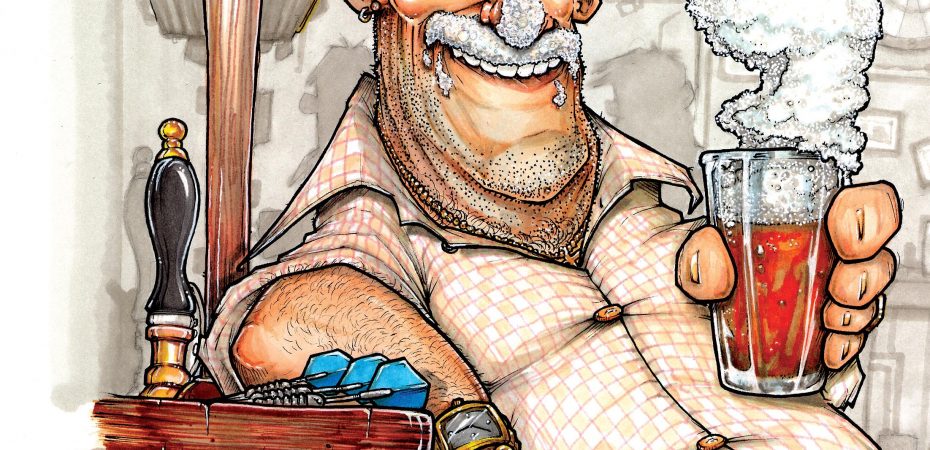Foam is one of those qualities of beer that seems to divide people – you either love or loath it.
For some drinkers beer can be served with a voluminous head and that is perfectly acceptable. However, for others, foam is just wasted beer. It is an aspect of beer that divides nations and has even been subject of High Court Judgements which found that foam should be regarded as an integral feature of beer but that the customer can, if they wish, ask for a full measure of beer. So why is beer able to create and sustain a head of foam?
Beer is the only alcoholic beverage that produces and maintains a stable head of foam. Other beverages such as cider and champagne will, when poured, produce foam but it will then rapidly collapse. Beer is unique in that it contains all the necessary components that are essential to produce a stable head of foam. However, the actual science behind how beer foam is formed is exceedingly complex and is still an area of much research.
Amongst beer foam scientists (yes they do exist) foam is described as a distribution of gas bubbles in liquid. In beer the gas that helps to create the foam is carbon dioxide (CO2). Beer contains a large volume of dissolved CO2, typically between 2.2 and 2.8 volumes of CO2 in a bottle or can. That is for every millilitre of beer there is between 2.2 and 2.8 millilitres of CO2. In fact beer can be described as a supersaturated beverage because brewers have managed to dissolve more gas in the beer than is theoretically possible under normal conditions (25°C and 1 atmosphere of pressure).
When you open a bottle of beer, apart from the reassuring pop as the cap or ring pull is opened, the CO2 usually remains dissolved in the beer. Occasionally, if you are very unlucky, you encounter what is known as gushing beer, an example of uncontrolled CO2 release resulting in a lot of mess and wasted beer. To generate foam without the mess we must introduce a bit of gentle turbulence into the beer as we pour it to encourage the controlled release of CO2 as bubbles.
However, when gas bubbles are introduced into a liquid the surface area of that liquid is increased which is in opposition to the force of surface tension and unless stabilised the bubbles will rapidly collapse.
So what is it about beer that means it can stabilise those bubbles and produce foam? The main foam stabilising material in beer is protein, typically derived from barley malt. However, some brewers may use a small proportion of wheat to improve foam stability due to wheat having a high protein content. Proteins are complex substances which have, as part of their structure, areas that are water loving (hydrophilic) and water hating (hydrophobic). When protein encounters a gas bubble the hydrophobic portion of the protein migrates away from the water into the wall of the gas bubble, there it will link up with other proteins via electrostatic interactions creating what could be described as a stabilising “skin” around the gas bubble.
This “skin” is further strengthened by the bitter hop compounds known as iso-alpha-acids which migrate into the bubble wall as they also have hydrophobic characteristics. Once in the bubble wall the iso-alpha-acids help to strengthen the protein “skin” which creates a much more stable foam. As an interesting aside if you taste beer foam it is much more bitter than the liquid beer. This is due to the bitter tasting hydrophobic iso-alpha-acids concentrating in the foam.
Foam is a very delicate structure and just as there are materials in beer that promote foam there are other materials that will interfere with it. The main culprits are substances known as lipids, which include fats.
Because lipids have regions of their structure which are hydrophobic they will behave in a similar way to foam stabilising proteins and migrate into the bubble walls. There, rather than stabilising foam, the lipids interfere with the interactions between proteins and hop bitter acids with the result that the foam collapses. Good brewing practice should ensure that very low levels of lipids survive into the final beer. It is more likely that these substances are introduced into beer while it is in the glass from sources such as lipstick, or typical bar snacks like potato crisps. In fact, in those countries where foam is not seen as a positive feature of beer, consumers have been known to dip a chip into their beer to assist its collapse.
Once the beer has been poured into the glass a number of processes occur which cause the foam to collapse. These processes are foam drainage, bubble coalescence and disproportionation and it is worth discussing each in a little more detail.
From the moment foam is formed gravity causes beer trapped between the gas bubble walls to drain from it. As beer drains from the foam, the walls of the bubbles start to touch and then merge or coalesce to produce larger, more unstable bubbles.
As coalescence continues a coarse foam is created where the bubbles are all different sizes. This leads to the final physical process involved in foam collapse, disproportionation. Beer foam bubbles contain CO2 which as a gas exerts a pressure on the bubble walls. In small bubbles carbon dioxide will exert a greater pressure than is found in big bubbles. If a small bubble is next to a big bubble the gas contained within the bubbles will try to reach equilibrium. The result is that the carbon dioxide dissolves through the wall of the small bubble into the larger bubble. The small bubbles therefore disappear and the big bubbles get bigger and ultimately less stable.
Article Continues in Beers of the World magazine Issue 23

